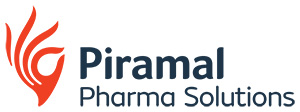Operational Excellence (OE) is one of the key elements of organisational leadership and organisational intelligence. It focuses on delivering maximum value to customers and stakeholders.
For a Contract Development and Manufacturing Organisation (CDMO) operating in the pharmaceutical industry, the focal point of Operational Excellence essentially is serving patients and customers efficiently in aspects of Safety, Quality, Delivery and Cost. This approach drives the company to analyse every element of operations carefully and ensure that they align with the needs of customers and their patients.
The philosophy of Operational Excellence involves the application of a variety of principles, systems and tools towards the sustainable improvement of key performance metrics. It is a journey that is covered over time, step by step, in all aspects of the business.
In increasingly competitive business environments with ever evolving market needs, an Operational Excellence model plays a crucial role in organisational success. In order to strongly institutionalise the culture of Operational Excellence across layers of business, various frameworks are used by organisations to assess and improve their work practice and performance.
With a strong consideration and commitment towards the company’s core values and vision, an Operational Excellence model should be built on pillars of:
- Operational leadership
- Technological focus
- Behavioural leadership
These pillars help build efficiency, quality, safety and sustainability directly into the processes themselves.
Operational leadership:
Kiichiro Toyoda, founder of Toyota Motor Corporation, strongly believed in the philosophy that “the ideal conditions for making things are created when machines, facilities, and people work together to add value without generating any waste.”
To make the manufacturing process robust and efficient, it needs to continuously improve and eliminate all the waste that lies hidden within the process. The tools and techniques from Lean Six Sigma philosophy can be very effective to improve the desired levels of process performance with respect to improvement in product yields, capacity and OTIF, while reducing the costs associated with poor quality.
The involvement and engagement of individuals in a systematic problem-solving approach is one of the key levers that contributes to continuously improving processes and achieving excellence. This must be supported by a culture grounded in collaboration, communication, and trust. Effective Root Cause Analysis (RCA) can help us stay efficient in operations since it can prevent any repetitive product or process issues, deviations or complaints that can influence the customer and patient experience.
Technological focus:
Focusing on technology to eliminate manual activities which can be automated will reduce the chances of human error and further improve the people’s productivity while strengthening operations. This can be achieved by identifying opportunities through mapping a value stream and eliminating the sources of waste and delay in the processes through innovative ideas and technology enhancements.
Behavioural leadership:
Along with operational leadership, the pillar that enables OE is culture building or behavioural leadership. It works on the principle of “engage and involve,” i.e., engage people from middle management to operator level and involve senior leadership in aligning the OE approach across the organisation. This should be driven by both top-down and bottom-up approach.
The top-down approach supports OE through strong vision and futuristic strategic planning, and can play a crucial role in identifying and driving high impact initiatives aligned with the organisational goals. It can encourage innovative thinking and benchmarking of best practices while building a culture of reward and recognition in the organisation. People’s capability building and skill improvement is also an important area of focus under cultural leadership. Building and enhancing people’s capabilities through various training programs leads to continuous skill development and enables them to drive the projects through a systematic approach.
The bottom-up approach is helpful to create a culture of improvement and ownership among large teams. It can consist of various initiatives like Kaizen, Daily Management, 6S, and Asset Care to improve process reliability and develops our strength with respect to various customer and regulatory compliance requirements.
A holistic and overarching approach to Operational Excellence should be followed by organisations, focused on a system of excellence consisting of operational and cultural leadership that is supported by a strong, capability- building culture.

